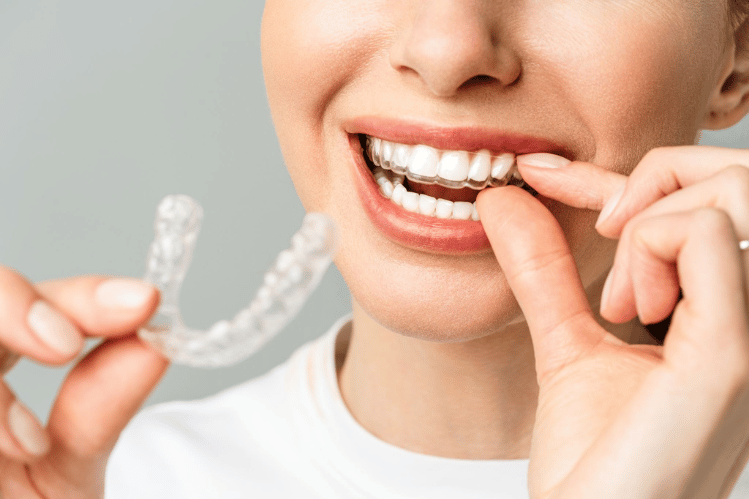The 7-Minute Rule for Legacy Orthodontics
The 7-Minute Rule for Legacy Orthodontics
Blog Article
Legacy Orthodontics Can Be Fun For Everyone
Table of ContentsThe Legacy Orthodontics DiariesNot known Facts About Legacy OrthodonticsOur Legacy Orthodontics StatementsHow Legacy Orthodontics can Save You Time, Stress, and Money.The Single Strategy To Use For Legacy Orthodontics
At Advanced Orthodontics, we supply people with a alternative treatment experience. Additionally, we provide flexible therapy routines, adaptable settlement options and a fun, pleasurable experience. leesburg invisalign. Call ( 480) 357-4900 today to find out more and routine a visit.An orthodontist is a dental professional trained to detect, avoid, and treat teeth and jaw irregularities. They fix existing problems and are trained to recognize problems that might create in the future. Orthodontists function with people of all ages, from children to adults. People usually link a perfect smile with good health.
Malocclusion, or misaligned teeth, can lead to dental problems, including dental cavity, periodontal illness, and challenging or painful chewing. But not every person is birthed with straight teeth. If you have a negative bite or large rooms in between your teeth, you may wish to get in touch with a dentist concentrating on orthodontic treatment.
The Ultimate Guide To Legacy Orthodontics
( Picture Credit Report: DigitalVision/Getty Images) Orthodontists utilize fixed and detachable dental tools, like braces, retainers, and bands, to change the placement of teeth in your mouth. Orthodontic treatment is for oral abnormalities, consisting of: Misaligned teethBite troubles, like an overbite or an underbiteCrowded teeth or teeth that are as well much apartJaw misalignmentThe objective of orthodontic treatment is to enhance your bite.
A healthy and balanced bite ensures you can consume, chew, and speak correctly. While you could believe of orthodontists as mostly for kids or teens who need dental braces, they can correct dental problems at any kind of age. Orthodontists go to college, dental college, and orthodontic school. After graduation, they invest 2 or 3 years in an orthodontic residency program.
, but not all dentists are orthodontists. They focus on two areas: Just how to effectively and safely relocate teeth Just how to correctly assist growth in the teeth, jaw, and faceOnce an orthodontist has completed training, they have the choice to end up being board licensed.
An Unbiased View of Legacy Orthodontics
Imbalance, or malocclusion, is the most common factor people see an orthodontist. It is genetic and is the outcome of size distinctions in between the upper and reduced jaw or between the jaw and teeth. Malocclusion results in tooth congestion, an askew jaw, or irregular bite patterns. Malocclusion is usually treated with: Your orthodontist affixes metal, ceramic, or plastic square bonds to your teeth.
Some people need a headgear to help move teeth into line with pressure from outside the mouth. A retainer is a custom-made device that maintains your teeth in place.
They can produce additional area in the mouth without having to pull teeth. Orthodontists utilize cords, surgical screws, or plates to sustain your jaw bone.
You may need to see an orthodontist if you have: Crowding or otherwise adequate space for all of your teethOverbite, when your upper teeth come by your base teethUnderbite, when your base teeth are too much forwardSpacing or concerns with gapsCrossbite, which is when your top teeth fit behind your bottom teeth when your mouth is closedOpen bite or a vertical gap between your front bottom and top teethMisplaced midline, when the facility of your bottom and upper teeth do not align Dealing with an oral malocclusion can: Make attacking, eating, and talking easierImprove the balance of our face and your overall appearanceEase pain from temporomandibular joint disordersDifferent your teeth and make them less complicated to clean up, aiding avoid dental cavity or tooth cavities It's typically a dental expert who first notices misaligned teeth during a routine examination.
Legacy Orthodontics for Beginners

Throughout your first orthodontic examination, you'll likely have: An oral examPhotos taken of your face and smileDental X-raysPanoramic (360 degree) X-rays of your face and headImpressions to develop molds of your teethThese examinations will aid your orthodontist understand how to continue with your treatment. leesburg braces. An orthodontist is a dental professional who's had training to treat your teeth and jaw
Orthodontists might carry out surgical treatment, exams,X-rays,and even more to aid you attain a more comfortable, much healthier smile. An orthodontist is concentrated on your bite, so something like a broken tooth would be dealt with by a dental professional. Orthodontists are dental practitioners however not all dental professionals are orthodontists. Orthodontists are concentrated on your bite, or the way your teeth meshed, and the straightness of your teeth.
Ever before wondered how celebrities always appear to have perfectly lined up teeth? Orthodontists are dental professionals who concentrate on correcting irregularities in the teeth and jaws.
Examine This Report about Legacy Orthodontics

, orthodontists have a varied toolkit at their disposal. These tried-and-true dental braces make use of a system of braces bound to the teeth and linked by cords.
Clear aligners, like Invisalign, are a preferred option for clients looking for their explanation a much more discreet therapy choice. These detachable trays are tailor-made to considerably shift the teeth's setting. Headgear may be used combined with dental braces or aligners to apply additional targeted forces, especially for dealing with jaw discrepancies. In cases of narrow jaws, palatal expanders can be used to produce area for appropriate tooth positioning.
Report this page